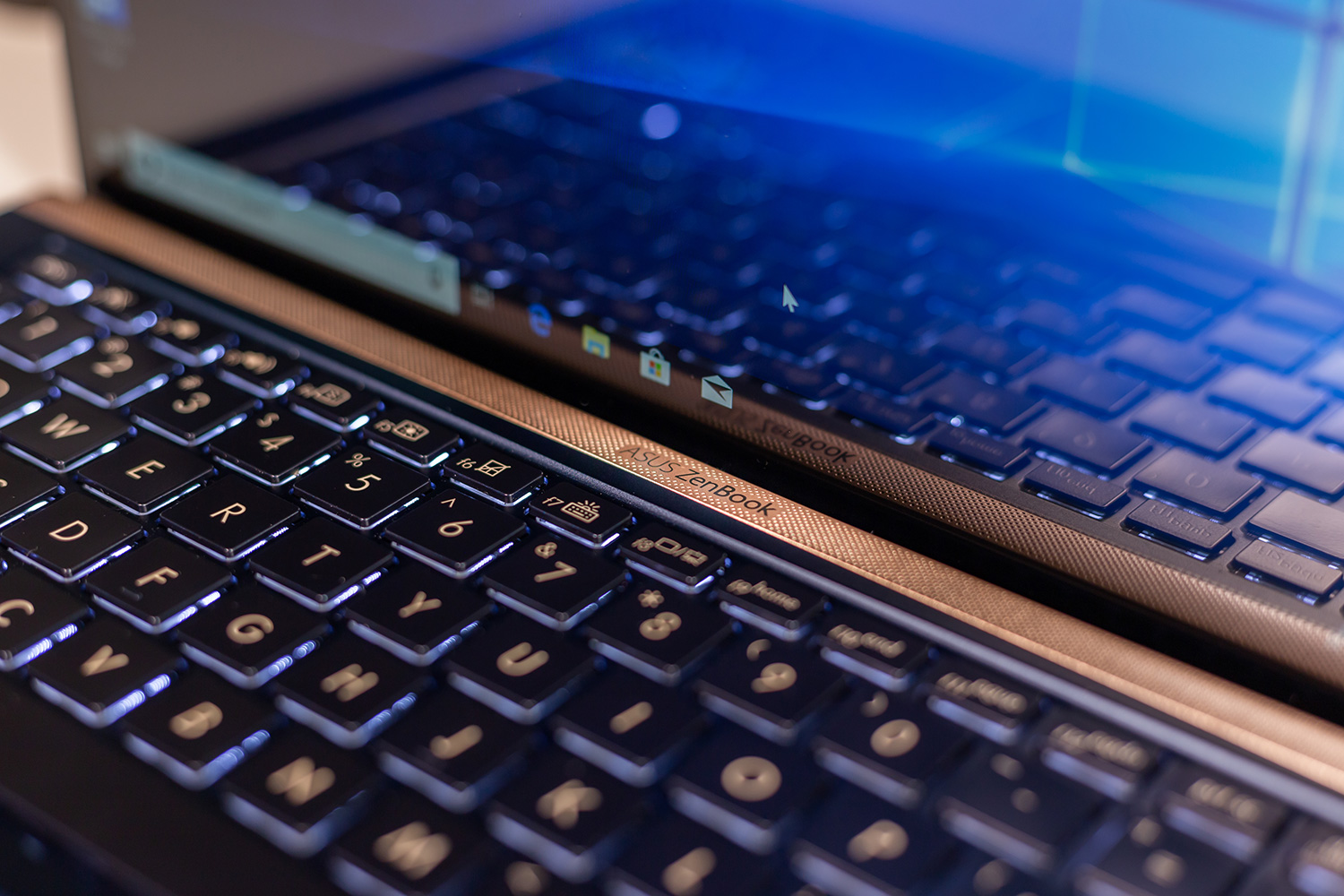If you’re in the market for a 13-inch laptop, your biggest problem might be creating your shortlist. After all, there are many qualified candidates currently on the market, in part because manufacturers such as Dell and Asus have been using recent developments in engineering to create laptops that drop weight without sacrificing performance.
The bezels, the borders between a screen and its frame, are one of these developments. Both the Asus ZenBook 13 UX333 and the latest Dell XPS 13 use them to great effect, allowing for a decrease in overall size. To that end, we pitted these two laptops against one another to see which one is deserving of your hard-earned cash.
Design

To begin with, these are both great-looking
The ZenBook isn’t just beautiful, it’s also tough thanks to MIL-STD-810g military standard testing for robustness. The XPS 13 is no slouch in this department thanks to a range of materials including aluminum and carbon fiber. And these two diminutive machines are also equally small thanks to some of the tiniest bezels you’ll find on
When it comes to which is better for inputting information, it’s another mixed bag. The ZenBook 13 has a fine keyboard with a precise mechanism but a weird layout and its very good Windows Precision touchpad is augmented by an LED inlay that offers up a nifty numeric keypad. The XPS 13’s keyboard is pulled over from the XPS 15 2-in-1 and is the same kind of magnetic levitation mechanism that’s very snappy and offers more travel than the earlier generation, and the touchpad is another good Windows Precision version without any kind of LED trickery. We’ll give the slightest win to Dell here for offering a touch display option.
Finally, connectivity reflects a different focus. The ZenBook 13 offers wider legacy support with USB-A, USB-C, and HDMI ports that save you the need to carry around a bunch of dongles. But the XPS doubles down on USB-C with Thunderbolt 3, and while that requires some dongles it also greatly enhanced the overall expandability of the machine. No external GPU enclosures for you, ZenBook.
Both are good-looking and well-built
Performance

The ZenBook 13 is built around an 8th-generation Whiskey Lake quad-core CPU, the Core i5-8265U, that represents a great balance of performance and efficiency. It’s more than fast enough for the usual productivity tasks, and it sips power. The XPS 13 also utilizes the latest Intel CPUs, although you can upgrade to the Core i7-8565U for a little extra oomph. We tested the XPS 13 with a Core i7-8565U processor and found that it was plenty quick, beating last years model by about eight percent in both single and multicore Geekbench 4 performance.
Where the ZenBook 13 wins out is in the option (arriving later in January 2019) to opt for an entry-level discrete GPU, the Nvidia GeForce MX150. That’s not very fast by discrete graphics standards, but it would trounce the XPS 13’s integrated Intel GPU. Storage performance, on the other hand, is a virtual tie, with both
Display quality is another differentiator. While the ZenBook 13’s sole display option is a terrific Full HD panel with solid contrast, brightness, and color gamut and accuracy, the XPS 13 has it matched. But Dell also offers both touch and non-touch Full HD options and a luscious 4K screen with Dolby Vision high dynamic range (HDR) support. Options are good, and the XPS 13 has them.
Both are great little
Portability

If it wasn’t already clear, neither of these
But battery life matters, too, and we’re going to call these two a tie. We tested the XPS 13 with its
When it comes to portability, you can’t go wrong with either of these
The XPS 13 wins this one, but not by as much as you might think

The ZenBook 13 doesn’t win any of our comparison sections, but it’s also very nicely priced. Spending just $850 nets you a Core i5-8265U, 8GB of RAM, and a 256GB SSD, which is plenty for the price.
The Dell XPS 13 starts at $900 with a Core i5, 4GB of
Yes, you’ll spend more money on the Dell XPS 13, but it’s worth it. The ZenBook 13 is a great notebook for a budget shopper, but the Dell is a better laptop overall, period.
Editors' Recommendations
- The 5 best laptops for photo editing and photographers
- The best Dell laptops for 2023: XPS, Inspiron, and more
- CES 2023: The Zenbook Pro 16X is looking like a serious MacBook Pro alternative
- Asus ZenBook S 13 Flip vs. HP Spectre x360 13.5: you can’t go wrong
- Dell XPS 15 vs. Razer Blade 15: which to buy in 2022


